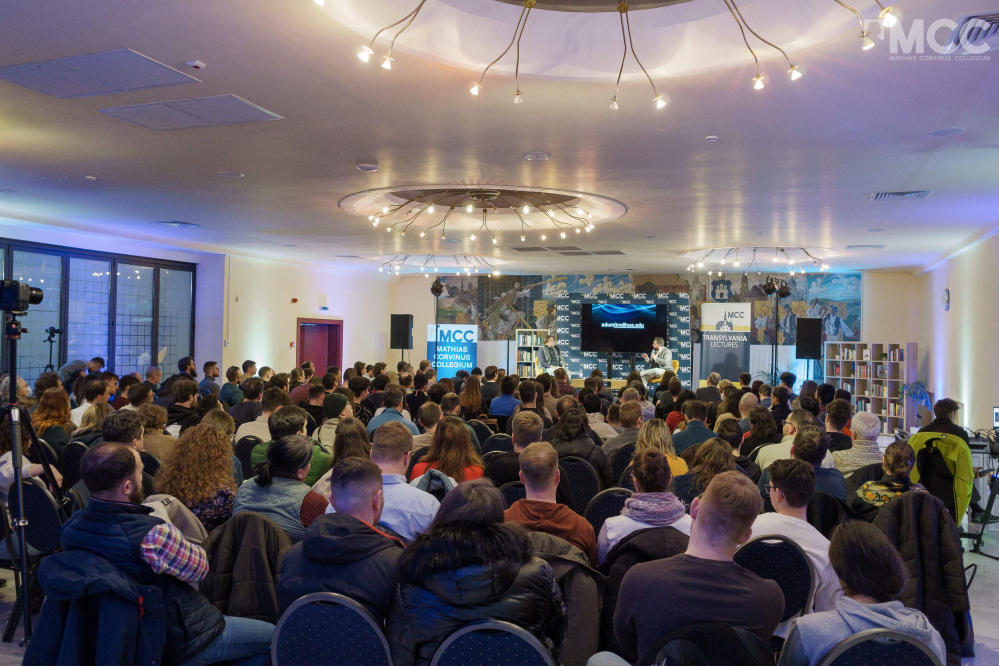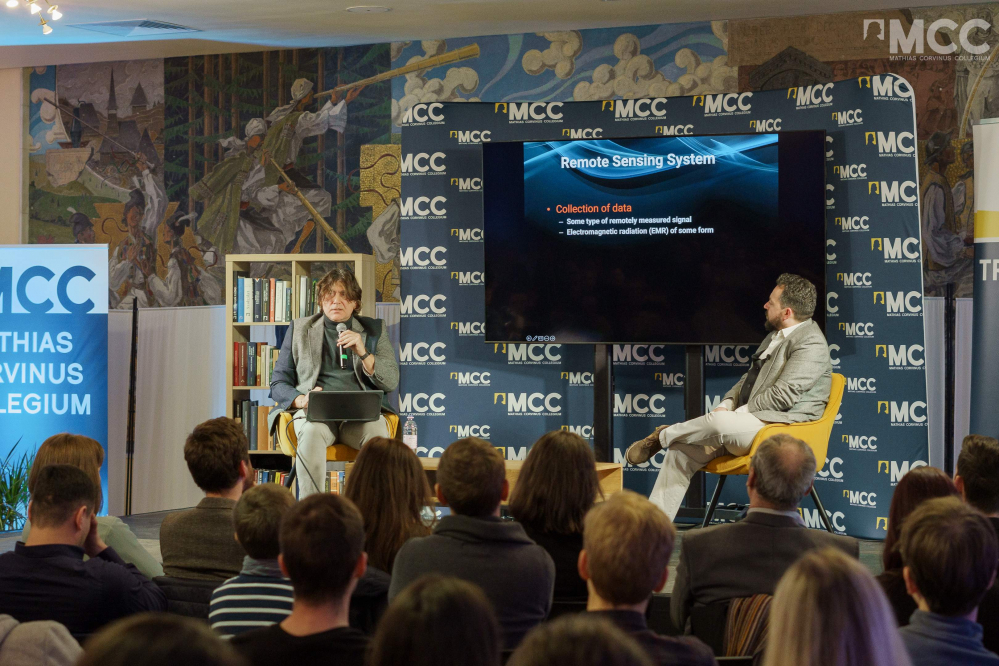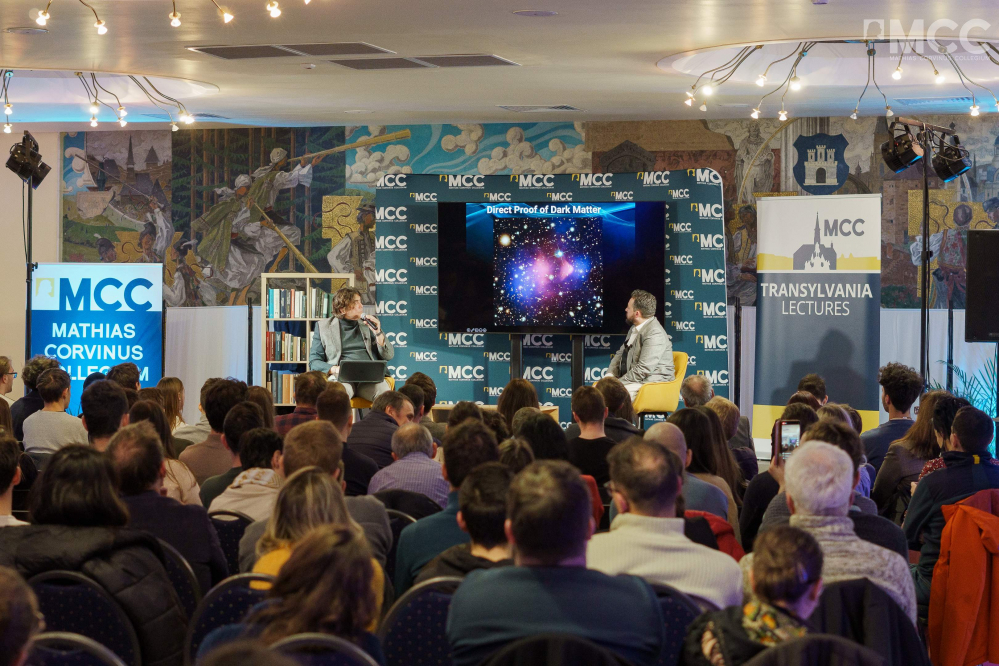Reading time: 4 minutes
Since its founding in 1958, NASA has pushed the boundaries of scientific and technical limits to explore the unknown. Today the list of things waiting to be discovered seems endless, just like the universe itself. At the latest event of the Transylvania Lectures series, organized by Mathias Corvinus Collegium (MCC), Dr Virgil Adumitroaie, data scientist at NASA talked about the ways of unveiling the mysteries of the universe with remote sensing. The event took place on January 30 at the MCC center in Kolozsvár/Cluj-Napoca.
The MCC Transylvania Lectures’ latest guest speaker was Virgil Adumitroaie, a data scientist at NASA’s Jet Propulsion Laboratory. The scientist of Romanian origin develops outer planetary environment models and radiation monitoring tools for the Juno Mission and performs atmospheric composition retrievals for Jupiter, Saturn, and Uranus. He is also a member of the ground software systems development team for the REASON instrument on the Europa Clipper mission. Norbert Zsolt Rácz, a Unitarian Minister from Kolozsvár served as a moderator at the discussion.
At the event, Virgil Adumitroaie presented the most important discoveries of NASA from the last decades. He talked about the Moon landing, the Voyager 1 and 2, the Perseverance Rover’s and the Ingenuity helicopter’s role on Mars. One method of discovery, which is the basis for the current state of the art in physics and cosmology, is remote sensing. This technique is obtaining information without being in contact with the source, collecting different signals in various frequencies that can be analyzed and transformed into something useful. The instruments capture signals coming from the universe in hope that we can uncover their meaning. For example, we can determine a star’s temperature and which elements are present in them.
Remote sensing started with the invention of telescopes in Galileo Galilei’s time. Today several kinds of telescopes are used in space and on the ground to observe different targets. They capture different wavelengths of light using various techniques and they have affected the way we look at the universe. Hubble was launched in 1990 and has discovered that the universe is expanding. The James Webb Space Telescope is complementing and enhancing Hubble’s discoveries. The Chandra X-ray Observatory has detected exploding stars and matter swirling around a black hole, and it is responsible for the first direct detection of dark matter in 2007. The Spitzer Space Telescope, launched in 2003, looks at the universe in the infrared spectrum, and was able to detect brown dwarves, exoplanets and organic molecules that could hold the secret to life on other planets.
Another significant instrument is the Cosmic Background Explorer (COBE), launched in 1989, that studied the radiation still left from the Big Bang to better understand how the universe formed. The Wilkinson Microwave Anisotropy Probe (WMAP) satellite returned data that allowed astronomers to precisely assess the age of the universe to be 13.77 billion years old and to determine that atoms make up only 4.6 percent of the universe, with the remainder being dark matter and dark energy.
The speaker also presented the Juno Mission: the spacecraft entered orbit around Jupiter in 2016, and in the beginning, the public could actively participate in taking pictures of the planet. Dr Adumitroaie pointed out that Jupiter is a failed star, if it had slightly more mass, we would have had two suns. Another interesting fact is that Juno captures the radio waves of Jupiter’s auroras. The spacecraft will eventually crash into Jupiter. This year NASA is also going to launch a spacecraft to one of Jupiter’s moons, Europa, which has the three elements that could lead to formation life: water, energy and chemistry.
Another interesting aspect of remote sensing is the discovery of exoplanets. The first planetary disc was observed in 1984, then in 1992 the first exoplanets were discovered. There are 5572 confirmed exoplanets of which only 199 Earth-sized. Kepler-186f is the first exoplanet discovered to be in the habitable zone, it could sustain the existence of liquid water. TRAPPIST-1 is an Earth-sized rocky world that could harbor life, located 97 light-years away. Other examples for habitable exoplanets are 1 Pegasi b and Kepler-16b.
The future holds more research with gravitational waves. Scientists hope that dark matter will be detectable more clearly through this method. LISA is a collaboration between ESA (European Space Agency) and NASA to develop and operate a space probe to detect and measure gravitational waves, ripples in the fabric of space-time caused by astrophysical events such as merging massive black holes. In the field of telescopes, the next step is the Roman Telescope, which will have a much wider view than Hubble and will help determine large constructions in the universe. At the same time, the SETI program (search for extraterrestrial intelligence) is trying to examine all the signals coming from all over the universe to determine unnatural or artificial sources. The new telescopes are able to detect the chemical signatures of elements that are the building blocks for life. These telescopes will not see someone waving at us, but we could detect complex substances like proteins and enzymes, or radiation signatures of those elements. An interesting project to look forward to is the next moon landing in 2026. The Artemis program's stated long-term goal is to establish a permanent base on the Moon to facilitate human missions to Mars.




